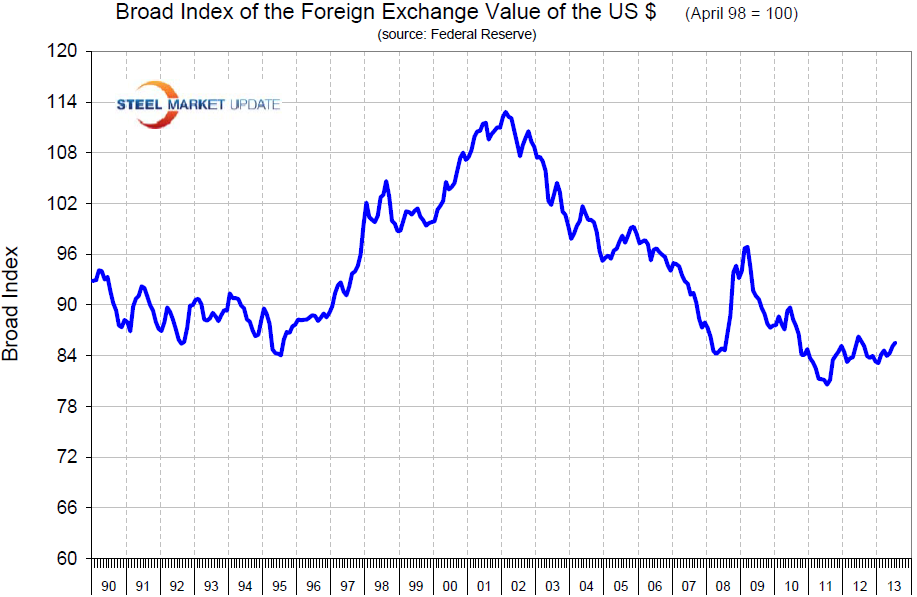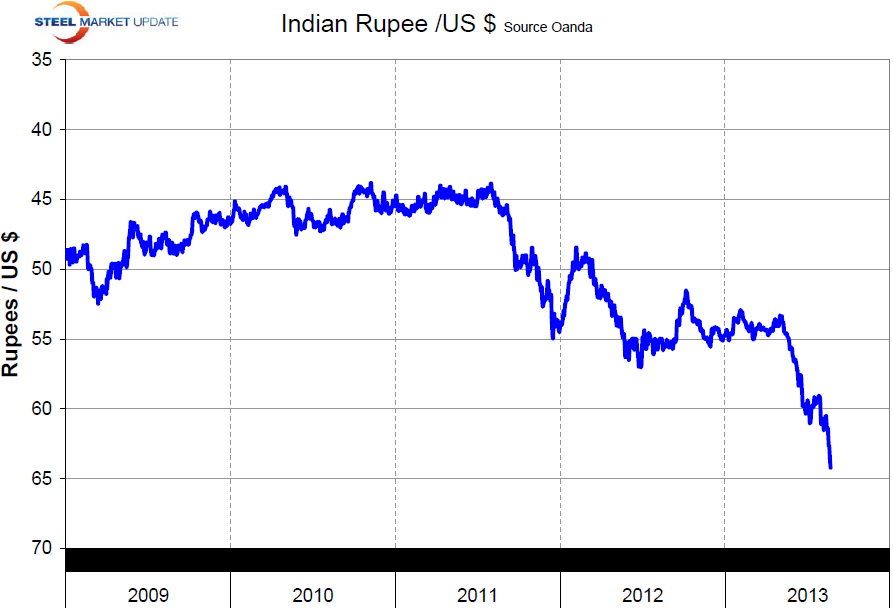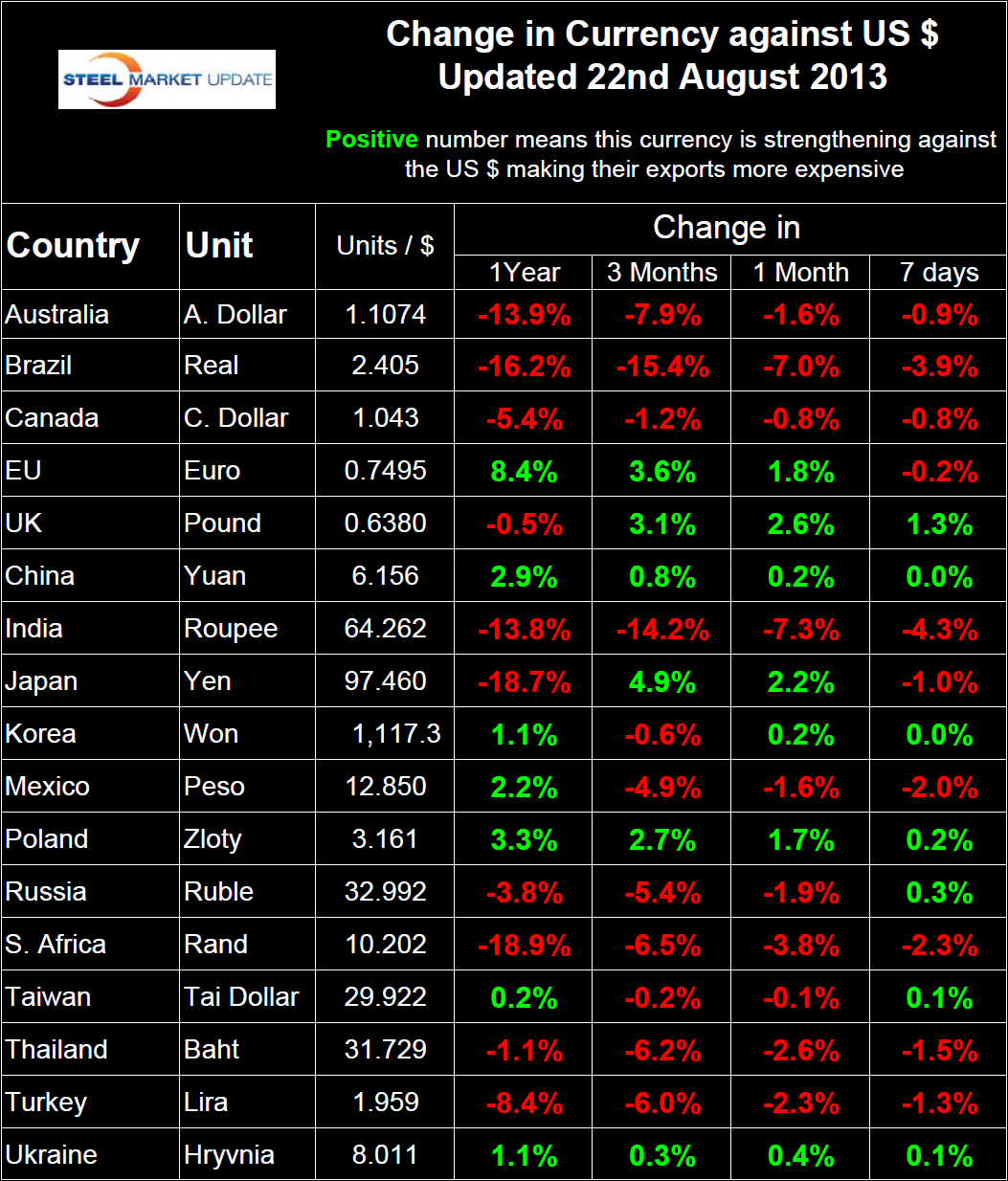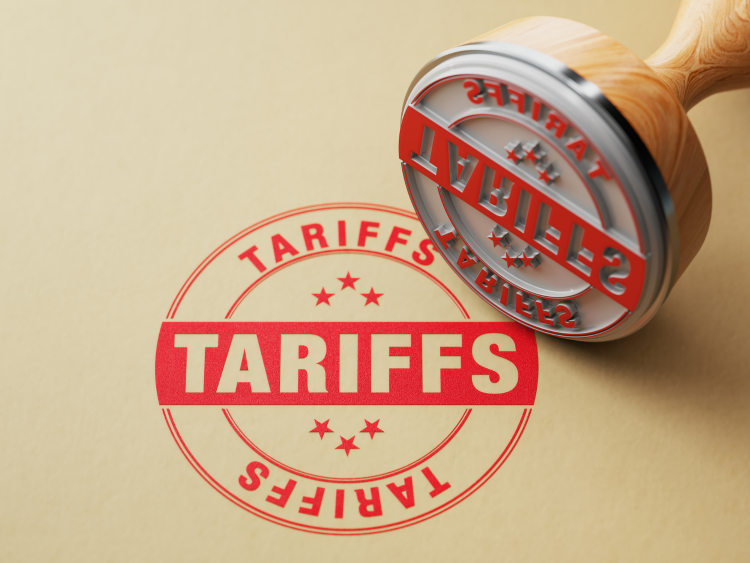Steel Products

Strengthening Dollar has Consequences for Steel Industry
Written by Peter Wright
August 26, 2013
Currency update August 22nd 2013. The Federal Reserve publishes a trade weighted index of the value of the US dollar against a basket of the currencies of our major trading partners on a daily and monthly basis. This is referred to as the Broad Index.

The Broad Index appreciated strongly in the 3rd Quarter of 2011 and since then has been more stable than at any time since 1993 /1994, (Fig 1). That is not true of many of the major steel trading nations.
 The following table shows the change in value of the individual steel trading nation’s currencies over the last year, three months, one month and seven days. Red numbers indicate that the currency is declining against the US dollar. In the last year, the currencies of Australia, Brazil, India, Japan and South Africa have all weakened by more than 13 percent against the US dollar. The most striking change this year is in the Indian Rupee which has been in free fall since May, (Fig 2). The Turkish Lira continues to be at an all time low and the Japanese Yen has stabilized at just under 100 Yen / US dollar. The Chinese Yuan continues to gradually strengthen.
The following table shows the change in value of the individual steel trading nation’s currencies over the last year, three months, one month and seven days. Red numbers indicate that the currency is declining against the US dollar. In the last year, the currencies of Australia, Brazil, India, Japan and South Africa have all weakened by more than 13 percent against the US dollar. The most striking change this year is in the Indian Rupee which has been in free fall since May, (Fig 2). The Turkish Lira continues to be at an all time low and the Japanese Yen has stabilized at just under 100 Yen / US dollar. The Chinese Yuan continues to gradually strengthen.
Implications for steel are that the depreciation of the Australian dollar and the Brazilian Real will make iron ore cheaper on the global market as measured in US Dollars. Goldman Sachs is forecasting an iron ore price of $80 / tonne for 62% Fe delivered north China in 2015. Most US steel exports are destined for our NAFTA partners; the US dollar has strengthened against both the Canadian dollar and the Mexican Peso in the last three months. The Canadian dollar is down by 5.4 percent in the last year. On the global market a US dollar that is stronger against a local currency makes the U.S. a more attractive export destination for their steel products.


Peter Wright
Read more from Peter WrightLatest in Steel Products

CRU: US stainless prices to rise on expanded S232 tariffs
Stainless prices in the US market will rise, following price increases by major US producers. Our base case scenario incorporates higher US prices in the near term, despite the initial negative reaction by the market. US stainless prices will go up in 2025 H2 and will stay elevated in 2026 as tariffs on stainless […]

Galvanized steel demand unsteady amid lingering buyer fatigue: HARDI
Uneven demand for galvanized steel in June reflects a market that remains mired in uncertainty, according to industry sources.

OCTG industry salutes Customs for catching trade crooks
The US OCTG Manufacturers Association is commending US Customs for intercepting another Thai company's attempt to illegally transship Chinese oil pipe to the US.

Whirlpool says tariffs will bolster business
“Economically, the business case for products made in the us has become a lot more attractive," the CEO told Fox Business.

Worthington Enterprises buys Elgen Manufacturing
Worthington Enterprises acquires HVAC products maker Elgen Manufacturing.
